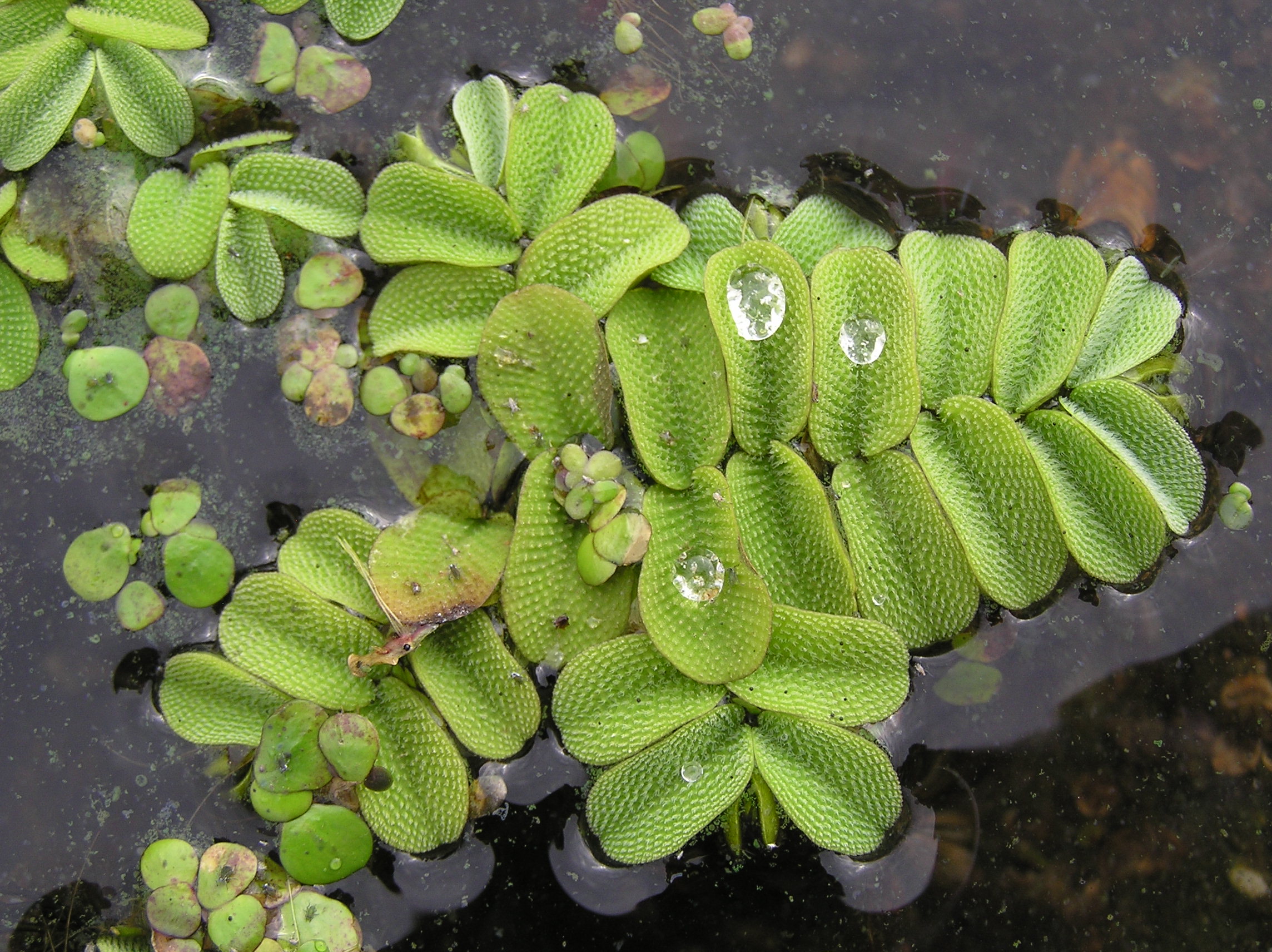Photo by Le.Loup.Gris licensed under CC BY-SA 3.0
My introduction to the genus Salvinia was as an oddball aquarium plant floating in a display tank at the local pet store. I knew nothing about plants at the time but I found it to be rather charming nonetheless. Every time the green raft of leaves floated under the filter outlet, water droplets would bead off them like water off of a ducks back. Even more attractive were the upside down forest of "roots" which were actively sheltering a bunch of baby guppies.
I grew some Salvinia for a few years before my interest in maintaining aquariums faded. I had forgotten about them for quite some time. Much later as I was diving into the wild world of botany, I started revisiting some of the plants that I had grown in various aquariums to learn more about them. It wasn't long before the memory of Salvinia returned. A quick search revealed something astonishing. Salvinia are not flowering plants. They are ferns!
The genus Salvinia is wide spread. They can be found growing naturally throughout North, Central, and South America, the West Indies, Europe, Africa, and Madagascar. Sadly, because of their popularity as aquarium and pond plants, a few species have become extremely aggressive invaders in many water ways. More on that in a bit.
Salvinia comprises roughly 12 different species. Of these, at least 4 are suspected to be naturally occurring hybrids. As you have probably already gathered, these ferns live out their entire lives as floating aquatic plants. Their most obvious feature are the pairs of fuzzy green leaves borne on tiny branching stems. These leaves are covered in trichomes that repel water, thus keeping them dry despite their aquatic habit.
These are not roots! Photo by Carassiuslike licensed under CC BY-SA 4.0
Less obvious are the other types of leaves these ferns produce. What looks like roots dangling below the water's surface are actually highly specialized, finely dissected leaves! I was super shocked to learn this and to be honest, it makes me appreciate these odd little ferns even more. It is on those underwater leaves that the spores are produced. Specialized structures called sporocarps form like tiny nodules on the tips of the leaf hairs.
Sporocarps come in two sizes, each producing its own kind of spore. Large sporocarps produce megaspores while the smaller sporocarps produce microspores. This reproductive strategy is called heterospory. Microspores germinate into gametophytes containing male sex organs or "antheridia," whereas the megaspores develop into gametophytes containing female sex organs or "archegonia."
As I mentioned above, some species of Salvinia have become aggressive invaders, especially in tropical and sub-tropical water ways. Original introductions were likely via plants released from aquariums and ponds but their small spores and vegetative growth habit means new introductions occur all too easily. Left unchecked, invasive Salvinia can form impenetrable mats that completely cover entire bodies of water and can be upwards of 2 feet thick!
Sporocarps galore! Photo by Kenraiz licensed under CC BY-SA 4.0
Lots of work has been done to find a cost effective way to control invasive Salvinia populations. A tiny weevil known scientifically as Cyrtobagous singularis has been used with great success in places like Australia. Still, the best way to fight invasive species is to prevent them from spreading into new areas. Check your boots, check your boats, and never ever dump your aquarium or pond plants into local water ways. Provided you pay attention, Salvinia are rather fascinating plants that really break the mold as far as most ferns are concerned.


